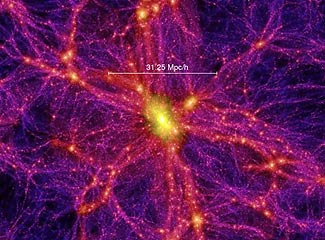One of the mechanisms proposed to explain the phenomenon of changes in the polarization of a laser beam in a tree assumes the involvement of a particle called Axion, which is a particle of "dark matter" whose existence was predicted according to various theories beyond the standard model of physics. This particle has not yet been observed in practice
Alluvial container, Galileo

A few months ago, a study by Italian researchers in the PVLAS research group was published, according to which the polarization of a laser beam moving in a vacuum where a magnetic field prevails changes due to the effect of the field. Such changes are not supposed to happen according to classical physics, and are often explained based on the existence of virtual particle and antiparticle pairs. In this study, the researchers found that the change occurs only in the presence of a magnetic field.
One of the mechanisms proposed to explain the phenomenon assumes the involvement of a particle called Axion, which is a particle of "dark matter" whose existence was predicted according to various theories beyond the standard model of physics. This particle has not yet been observed in practice. The hypothesis is that some of the photons become axions, under the influence of a certain component of the angular momentum of the photons in relation to the direction of the external magnetic field. The result is a net change in the direction of the angular momentum, that is, in the polarization of the beam. Now scientists from Germany - Ulrich K�tz and his colleagues - are proposing an experiment that will test whether evidence for this process can be discerned.
The experiment should be based on a high-intensity laser beam, which will be produced using a free electron laser located at the DESY research facility in Germany. The research will repeat the experiment conducted by the Italian group, but this time, after the beam passes through the magnetic field, the photons will encounter an opaque wall. The hypothesis is that if some of the photons were converted into axions, this part could pass through the wall, since axions have a low cross section with matter (that is, they hardly interact with matter particles).
Also on the other side of the wall there will be a magnetic field, which will cause the opposite process, so that some of the axions will be converted into photons again. On the other side of the wall, the researchers hope, it will be possible to observe a "reconstruction" of the photons. A particularly sensitive detector will be placed in order to observe the few photons that "pass through walls". The scientists hope that evidence for the existence of axions can be discerned, or alternatively, this explanation for the change in polarization observed by the Italian group can be ruled out with high probability.
The axions have never been observed - neither in particle accelerators nor in astrophysical systems. It is possible, of course, that they do not exist at all, and in any case are not involved in the polarization change described here; But if they do exist, they may have certain properties that prevent them from being formed or detected under most conditions, but this experiment will allow the proper conditions to observe them.
